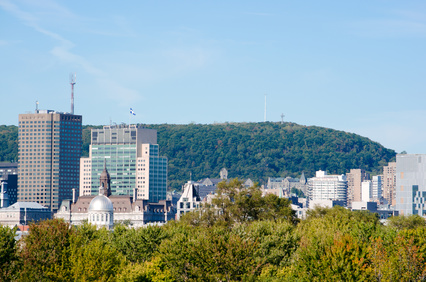Let’s put a price on crossing Mount Royal

The city’s pilot project to ban most through traffic from Camillien-Houde Way will begin at the end of next week. Barriers, special-use privileges, diverse treatments of interest groups — as proposed by our mayor — are not the best way to preserve Mount Royal’s environment and integrity, however. Putting a price on a vehicle traverse would be fairer and more efficient.
Right now, visitors who park on the mountain and then use it to walk, jog, have a family picnic or perform tai chi exercises pay for the right to do that. But for some reason, motorists who congest, emit carbon dioxide and (at times) speed dangerously on the mountain are exempt from paying for its use.
Concern about safety and the mountain’s environment are the stated motivations for the new measures. A young cyclist was killed in a collision with a vehicle in 2017. Our mayor suggests that a reduced number of vehicles, combined with additional speed-reduction measures, would increase safety and ameliorate the environment. She is correct on that score.
However, rather than prohibiting through traffic, I suggest that we experiment initially with a “toonie-toll” that would be integrated with the city’s parking app. Cameras would be installed on the ascents and drivers would have 36 hours in which to pay their fees electronically. A toonie is not a trivial toll: it could amount to $80 per month for a motorist who crosses the mountain as part of a commute to and from work, which is approximately the cost of a monthly transit pass.
Keep in mind that the objective of access limitation should be just that: to reduce use rather than eliminate it. And a modest fee, of a couple of dollars, should be sufficient to achieve this: it would induce some users to take alternate routes. If set too high or too low initially, the toll could be adjusted easily. It could also oscillate to cope with peak hours, and the real-time price could be posted on the city’s web site.
Tolling has been shown to be successful the world over — witness our own Highway 25 system, or Highway 407 around Toronto, or London’s core access fee. London and Toronto are examples of elevated tolls. Urban highway tolls in the United States ofter are only about a dollar.
Special interest groups should not be afforded free access. That includes visitors to the cemeteries and tour buses.
Tour buses cause heavier congestion and emit more CO2 than do passenger vehicles, so rather than an exemption, they should have the privilege of paying a higher toll. Tourists are generally among the wealthier strata of society and it is inappropriate to grant them a fee remission for that reason also.
And yes, I also advocate collecting tolls from those vehicles whose occupants, grieving or otherwise, visit the cemeteries. They, too, are congesting our living mountain and emitting CO2. These visitors should find solace in their relatives and ancestors having found peace in the centre of a city where access is so easy.
While the reduction of vehicular traffic will create a more favourable environment for all users, it should not be seen as a licence for risky high-speed bike descents.
Few bikers use the Way as a commuter route; almost all use it as a cardiovascular training ground. Cyclists of every age are to be seen, particularly on weekends and summer evenings, in huge numbers, grunting their way against the laws of gravity on their sometimes spiritual ascents. They post their times on Strava. They, too, will benefit from decongestion, but should remember they are subject to the rules of the road.
Finally, putting a price on the impacts that drivers impose on this jewel of the city is completely consistent with reduced speed limits and the presence of speed bumps or roundabouts. These are complementary, not competing, policies.
Ian Irvine est professeur d’économie à l’Université Concordia et chercheur associé à l’Institut économique de Montréal. Il signe ce texte à titre personnel.

